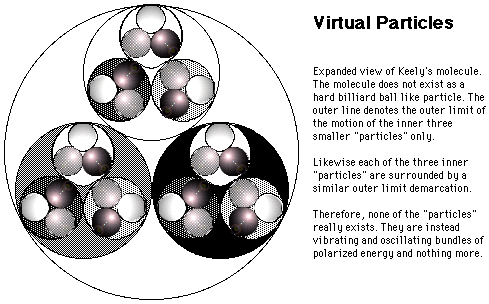Virtual Particles: Do They Really Create Something from Nothing?

One of the most misunderstood and misused concepts in modern physics is the idea of virtual particles. They are often presented, as Lawrence Krauss does, as a scientific miracle where something pops into existence from absolutely nothing, seemingly violating fundamental laws. But is this an accurate description?
The short answer is no. Let's demystify what virtual particles are and, more importantly, what they are not.
What Virtual Particles Actually Are
According to quantum mechanics, the vacuum of space is not truly empty. The Heisenberg Uncertainty Principle states that for extremely brief moments, there is a trade-off between energy and time. This allows for the spontaneous, fleeting appearance of particle-antiparticle pairs.
These are the so-called "virtual particles." They are a manifestation of the energy inherent in the quantum fields that permeate all of space.
Key characteristics:
- They are fleeting: They exist for timescales so short they are less than the Planck time, and they annihilate each other almost immediately.
- They are not directly observable: Their existence is inferred through their indirect effects, such as tiny shifts in the energy levels of atoms (the Lamb shift) or the Casimir effect.
- They require a quantum field: This is the most crucial point. They do not appear from nothing; they are excitations or fluctuations of a pre-existing something—the quantum field.
The Misapplication: From "Quantum Fluctuation" to "Universe"
The leap from virtual particles to the creation of the entire universe is a massive, unsupported extrapolation. Here’s why the analogy fails:
- The "Nothing" is Really "Something": The quantum vacuum, with its fields and energy, is a rich physical structure. Calling it "nothing" is a philosophical error, not a scientific statement. As one critic noted, this is like saying a banker with assets and debts that cancel to zero has "nothing"—it's an accounting trick, not a description of reality.
- Scale and Duration are Incomparable: Virtual particles are subatomic and last for an infinitesimal moment. The universe is astronomically massive and has lasted for billions of years. There is no known physical mechanism that can "lock in" a quantum fluctuation on a cosmic scale.
- The Laws are Presumed: For this process to work, you must assume the pre-existence of the laws of quantum mechanics. The question "Why is there something rather than nothing?" is not answered by saying "Because quantum fields exist." It simply pushes the question back a step: Why are there quantum fields and laws of physics rather than nothing?
Conclusion: A Triumph of Physics, Not a Defeat for Metaphysics
Virtual particles are a fascinating and real consequence of quantum theory. They demonstrate the bizarre and counter-intuitive nature of the subatomic world.
However, they do not represent "something from nothing." They represent something from something—a temporary rearrangement of energy in a pre-existing quantum field governed by pre-existing physical laws.
Using them as proof that the universe could create itself is a profound category error. It borrows the credibility of solid, if strange, quantum physics to lend support to a much grander—and much more speculative—metaphysical claim. The real mystery of existence remains intact.